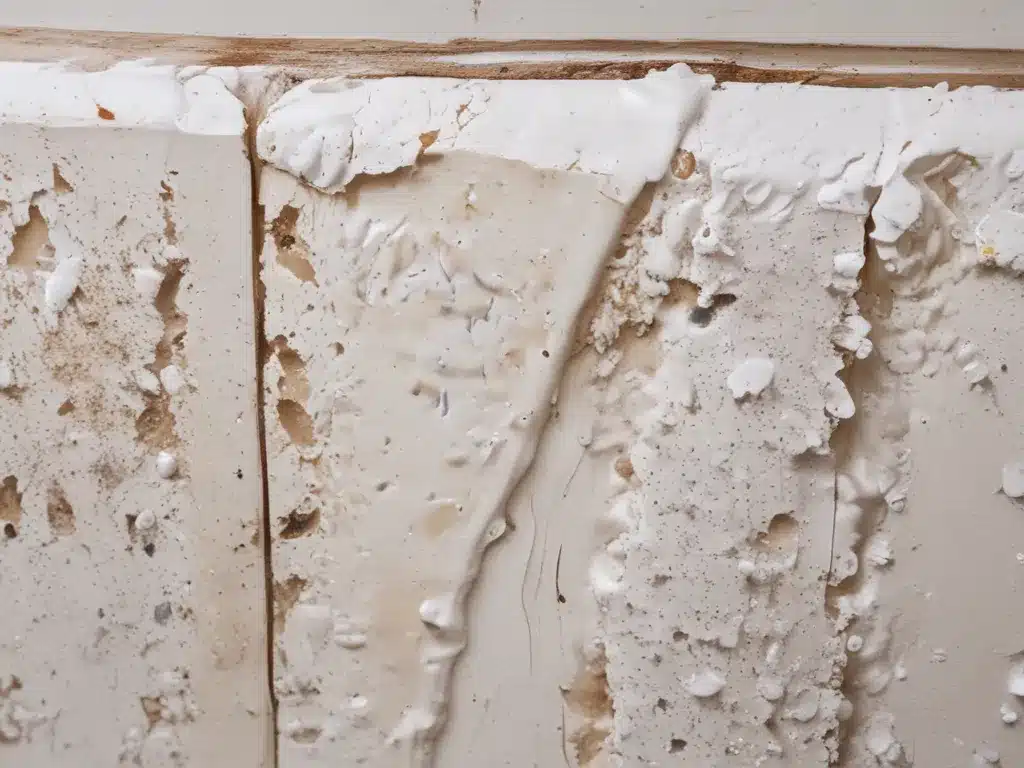
Introduction
Mold and mildew thrive in moist environments, posing potential health risks and unsightly stains. While bleach is a common solution, it can be harsh and potentially damaging to surfaces and the environment. In this article, I explore eco-friendly and effective alternatives to remove mold and mildew without using bleach.
Vinegar: A Versatile Mold-Fighting Agent
Vinegar is a natural and affordable option for tackling mold and mildew. Its acetic acid content disrupts the cellular structures of these fungi, making it an effective mold killer. Here’s how I utilize vinegar:
- I mix equal parts of white vinegar and water in a spray bottle.
- I spray the vinegar solution directly onto the moldy areas.
- I let it sit for at least an hour to allow the vinegar to work its magic.
- I scrub the affected surfaces with a stiff brush or sponge.
- I rinse the area thoroughly with clean water.
For stubborn mold, I may need to repeat this process or increase the vinegar concentration. Vinegar is safe for most surfaces, but I always test it on a small, inconspicuous area first.
Baking Soda: A Gentle Abrasive and Deodorizer
Baking soda is another natural wonder when it comes to mold and mildew removal. It acts as a mild abrasive and helps eliminate musty odors. Here’s how I use baking soda:
- I mix baking soda and water to form a paste.
- I apply the paste to the moldy areas using a brush or sponge.
- I let it sit for several minutes to allow the baking soda to work its magic.
- I scrub the affected surfaces with a stiff brush or sponge.
- I rinse the area thoroughly with clean water.
For particularly stubborn mold, I may add a bit of vinegar to the baking soda paste for an extra boost of cleaning power.
Tea Tree Oil: A Natural Antimicrobial Agent
Tea tree oil is known for its potent antimicrobial properties, making it an effective mold and mildew killer. Here’s how I incorporate tea tree oil into my cleaning routine:
- I mix a few drops of tea tree oil with water in a spray bottle.
- I spray the solution directly onto the moldy areas.
- I let it sit for at least 30 minutes to allow the tea tree oil to work its magic.
- I scrub the affected surfaces with a brush or sponge.
- I rinse the area thoroughly with clean water.
Tea tree oil can be quite potent, so I always test it on a small, inconspicuous area first and ensure proper ventilation when using it.
Hydrogen Peroxide: A Powerful Oxidizing Agent
Hydrogen peroxide is a versatile cleaning agent that can effectively kill mold and mildew. Its oxidizing properties break down the cellular structures of these fungi. Here’s how I use hydrogen peroxide:
- I mix equal parts of 3% hydrogen peroxide and water in a spray bottle.
- I spray the solution directly onto the moldy areas.
- I let it sit for at least 30 minutes to allow the hydrogen peroxide to work its magic.
- I scrub the affected surfaces with a brush or sponge.
- I rinse the area thoroughly with clean water.
Hydrogen peroxide can be quite potent, so I always test it on a small, inconspicuous area first and ensure proper ventilation when using it.
Essential Oils: Natural Mold and Mildew Fighters
Essential oils like tea tree, clove, and lemon offer natural antimicrobial and antifungal properties, making them effective allies in the fight against mold and mildew. Here’s how I incorporate essential oils into my cleaning routine:
- I mix a few drops of essential oil with water in a spray bottle.
- I spray the solution directly onto the moldy areas.
- I let it sit for at least 30 minutes to allow the essential oils to work their magic.
- I scrub the affected surfaces with a brush or sponge.
- I rinse the area thoroughly with clean water.
Essential oils can be quite potent, so I always test them on a small, inconspicuous area first and ensure proper ventilation when using them.
Prevention: Addressing the Root Causes
While these natural solutions are effective for removing existing mold and mildew, prevention is key. To minimize future growth, I address the root causes:
- I fix any leaks or water damage that could lead to moisture buildup.
- I ensure proper ventilation in bathrooms, kitchens, and other moisture-prone areas.
- I use a dehumidifier in damp spaces to reduce humidity levels.
- I regularly clean and dry any areas prone to mold and mildew growth.
By addressing the underlying moisture issues, I can significantly reduce the likelihood of future mold and mildew problems.
Conclusion
Removing mold and mildew without using bleach is not only possible but also environmentally friendly and safer for your home. By utilizing natural solutions like vinegar, baking soda, tea tree oil, hydrogen peroxide, and essential oils, I can effectively tackle these fungal invaders without resorting to harsh chemicals. Remember, prevention is key, so addressing moisture issues and maintaining a clean, well-ventilated environment is crucial for long-term mold and mildew control.






